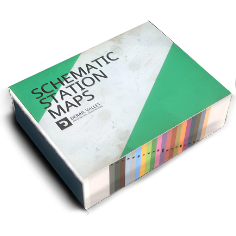Body Damage/zh-hant: Difference between revisions
Updating to match new version of source page |
Updating to match new version of source page |
||
| Line 22: | Line 22: | ||
<div lang="en" dir="ltr" class="mw-content-ltr"> | <div lang="en" dir="ltr" class="mw-content-ltr"> | ||
Body damage can be forced manually in {{pll|Sandbox|sandbox mode}} using the {{pll|Comms Radio Cheat Modes|comms radio damage mode}}. | Body damage can be forced manually in {{pll|Sandbox|sandbox mode}} using the {{pll|Comms Radio Cheat Modes|comms radio damage mode}}. | ||
</div> | |||
<div lang="en" dir="ltr" class="mw-content-ltr"> | |||
Damaged vehicle bodies can be {{pll|Servicing Overview|serviced}}. | |||
</div> | </div> | ||
[[Category:Servicing|4]] | [[Category:Servicing|4]] | ||
Revision as of 14:40, 12 March 2025
軌道車輛的車身可能會因碰撞、激烈的調車動作、嚴重的動力總成故障導致部件飛散、起火甚至爆炸而受損。車體受損將可能導致電氣系統故障,使燈光、雨刷和其他電氣設備無法正常運作。不會影響車輛的移動能力。
Most common situations in which collision damage occurs is due to derailing, distracted shunting, badly set up switches and wheelslide. Body damage can also be caused by various powertrain failures that cause parts to fly apart, fire and even explosions.
Damage to a vehicle's body may result in failure of various accessories, such as windows, lights and compressors. It doesn't otherwise affect the moving capability of a vehicle, however.
To ensure safe contact between vehicles, it is recommended not to collide at more than 5 km/h. To help anticipate contact better, there are proximity sensor gadgets.
Body damage of a vehicle is displayed on its ID plate.
Body damage can be forced manually in sandbox mode using the comms radio damage mode.
Damaged vehicle bodies can be serviced.
